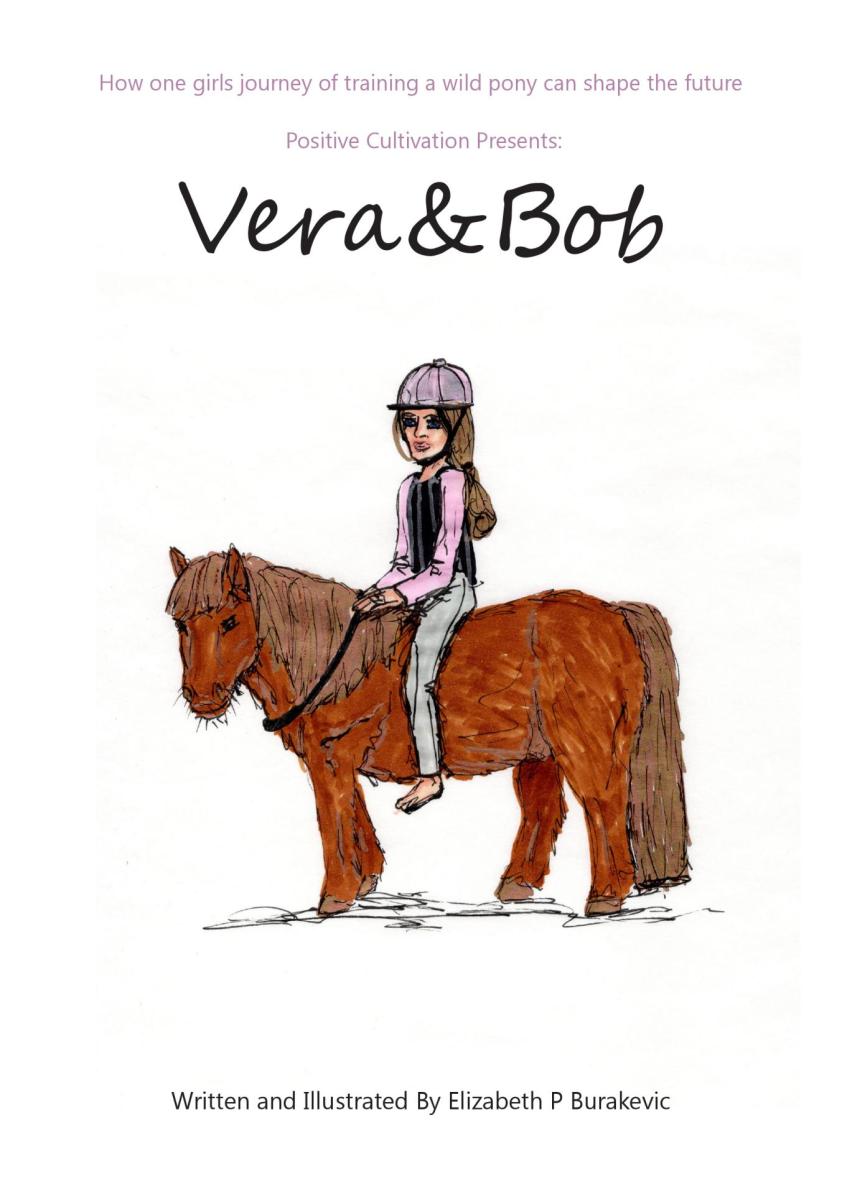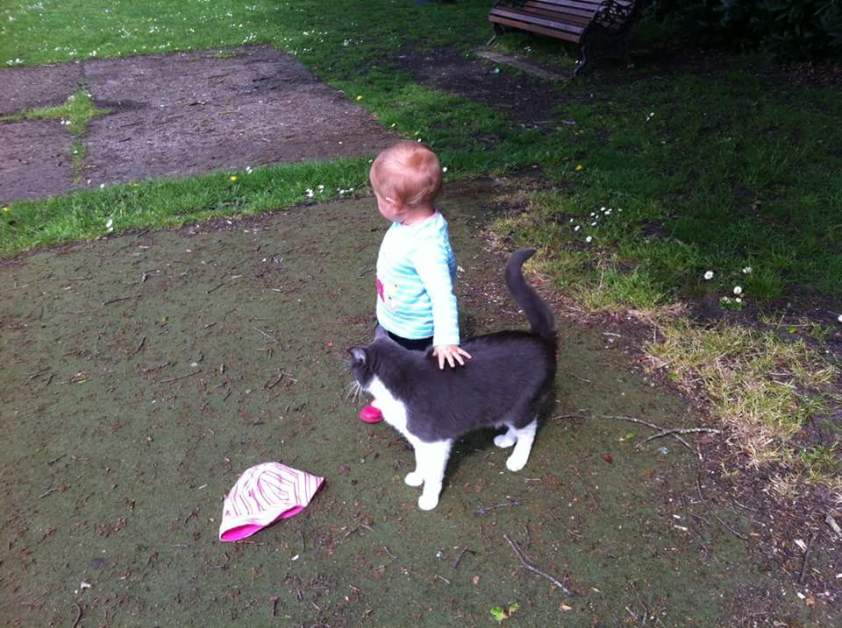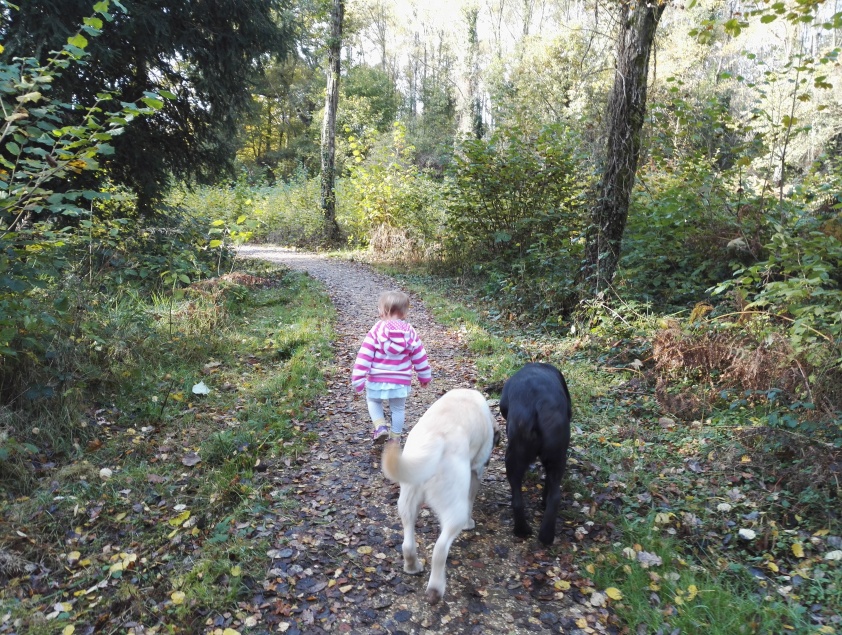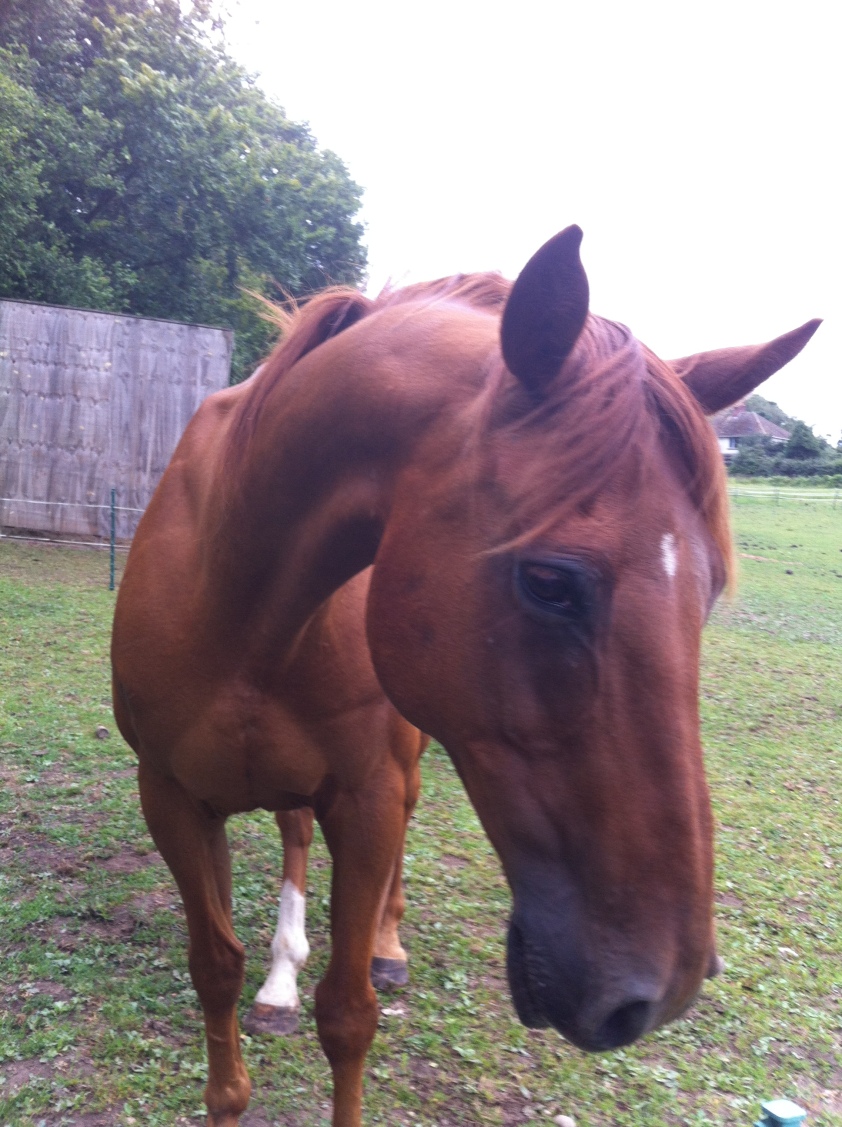This is my dissertation from a few years ago, my goal was to learn more about the physical abilities of a horse and how they move. Having this understanding allows you to recognise the difference between suitable and unsuitable requests and restrictions people apply to the horse. Everyone should be ready to listen to their horse and assess them objectively.
The course required that I focus on a competitive discipline, Study the conformation of a horse of my choosing, focusing on areas of the body, and then discuss suitability of the horse for competition.
Conformation and Action
This report will examine what makes a good show jumping horse and conformation problems that cause the individual to be overlooked in selected disciplines; this will be related to a static analysis of a selected equine and the pro’s and con’s of that animal, supported by measurements and images from the appendix.
The Show-Jumping prospect should demonstrate controlled speed, balance and collection. The horse should express a willingness to follow instruction and be forward going in new circumstances. Most importantly, they should be able to clear a jump cleanly. Bennett (2012, p.69) suggests that:
“The most spectacular natural action is possessed by horses with the following combination of characteristics: a moderately upright shoulder angle (nearly 60 degrees); a long, steep humerus…short cannon bones, low knees and substantial bone to preserve soundness through repeated landings.”
Whilst this maximises the height and fold of the knees over a jump and safety in absorbing concussion through the cannons; it is said that the angle of the pasterns should mirror the angle of the shoulder and a 60 degree pastern and hoof would be quite steep and prone to trauma. A balance between the two must be found as if the angles are too acute the kinetic energy will be absorbed through the limb of the horse and the impulsion required for uplift lost; too obtuse and the joints will be damaged by concussive forces, which will decrease the longevity of the horse’s career and soundness. The humerus and scapular are key bones in determining the quality of a jumping horse; a long humerus increases the scope of the jump:
“To be considered long, the humerus must be at least 50% as long as the shoulder blade… ideally the angle between the line of the humerus and the line of the shoulder will be wider than 90 degrees” (Bennett, 2012, p70)
On landing the Show-jumper’s legs can receive forces of around a tonne (figure 14), “…the trailing forelimb has to absorb twice his body weight…” (Higgins, 2011, p.59) this means the upper arm should be angled as previously described and the lower limb should be straight, but not over straight at the knee; free from marks, swellings or bumps and have substantial joints. The knee should be low to shorten the cannon, where there are no muscles and as a result is a more fragile area. The angle of the pastern between 45 – 60 degrees and finished off by symmetrical, level hooves with full heel bulbs for shock absorbsion. Any deviation from this would lead the horse to weight bare unevenly putting the joints under excess stress, risking injury such as tendon or ligament strain and damage to the sensitive areas of the foot.
Figure 14 helps visualise the equine structure whilst jumping and the strains that can occur. Key areas of injury in a Show-jumping horse are the “sacrum, back, lower hock, proximal suspensory ligament in the fore and hind, deep digital and superficial flexor tendons, accessory ligament and feet” (Barr, 2012, p.32-34); this makes ‘perfection’ in these areas more critical.
Sparky (figure 1) is a Nineteen year old Thoroughbred x Hunter x Arab. He was backed at Five years old and has been used as an on/off ‘happy hack’ horse. After minimal riding for a considerable length of time; attempts were made to re-introduce him to gentle work but he became ‘cold backed’ and was diagnosed with arthritis. He has now been in retirement for two years and is turned out all year round.
The main good points are that his withers reach well into his back (figures 1 & 9) and he has good bone with large joints (figures 1, 8, 11 & 12), he also has strong, symmetrical feet. It is impossible to get this horse to stand square without the use of phenelbutazone (figure 11 depicts him standing with his hind cannons perpendicular to the ground); he points the left fore and puts more weight down the right side of his body, this can be supported by figure 12 and the table of angles, that shows how the hooves on the right point outward more than those on the left, however it is noted that the right cannon seems slightly offset below the knee, human error can not be ruled out as the differences are minor. All the limb sections measure the same but knowing the rider had a weak left ankle, the imbalance has likely come about due to him compensating for the rider and/or arthritic pain.
Sparky’s hind hooves point out; ‘toeing out’ slightly behind is normal as it allows the leg to move straight, around the edge of the rib cage (so long as the angle is the same as the stifle and on equal plane to the hock); in Sparky’s case his ribs protrude due to weak abdominal muscles, if his loin was shorter the angle of his stifle and toes would not be substantial enough to allow free movement. ‘Toeing out’ on the front is not permissible in competition horses as it indicates potential for lameness. It can originate from any part of the leg and often accompanies a base narrow or wide stance; being base wide with toes that points out, puts stress on the inside of the limb and in movement the hoof will break over the inside of the toe, toes that point out on a narrow based horse will strain the outside, both create un-even wear, but the narrow stance increases the chance of self inflicted strike injuries as ‘toeing out’ causes the legs to swing inward.
Most congenital ‘toeing out’ defects can be cured with remedial farriery if done before the age of two months. Horses with some forelimb defaults can still compete if the trainer selects the correct discipline, for example; a horse that ‘toes in’ on one leg but not the other could compete in flat racing in America on the oval circuits if the default is on the outer leg, as it receives less force then the inner leg, however no horse with defective forelimbs can be expected to remain sound or have the longevity required to excel competitively.
Sparky has a reasonably concave spine and distended abdominal muscles. Weakness in the abdominal muscles particularly the rectus abdominus that spans that area (figures 9 & 10) could be due to improper training, lack of current exercise or poor posture due to underlying and undiagnosed low grade back pain; he often displays a clamped tail that is held slightly to the right (figures 1, 9 & 12), supporting a theory of pain or discomfort in the back and/or hind quarters. The lateral view of this horse shows an undulating topline from the start of the lumbar region to the dock.
In all Show-jumping prospects the withers should reach well into the thoracic region and be higher than the croup. Back length should be considered; a short back is strong, allows for sharp turns and better balance but could be restrictive if the vertebrae are close set and can reduce the horses ability to extend the stride; a long back increases stride length and speed, as well as comfort for the rider, however, if it is too long; agility will be reduced and collection and bascule harder to achieve, this is important in a jumping horse that needs to be able to engage hind quarters rapidly.
Excessive length in the lumbar region creates a weakness in the lumbo-sacral junction (figure 13) and has a knock on effect on the strength of the dorsal chain muscles, as well as down the hind limbs and pelvis. Sacroiliac pain is common in jumping horses as the junction absorbs concussion when transferring forward motion from the hind. Pain here can also be secondary to hind limb lameness. It is especially important to maintain peak fitness in a horse with a long back; a well muscled body helps to dampen and distribute concussion more evenly.
“An ideally placed lumbo-sacral joint lies as far forward as is anatomically possible – on a line connecting the left and right points of hip.” (Bennett, 2012, p.11) Figure 7 depicts the coupling of Sparky and is less than ideal for allowing good collection. In some long backed horses true engagement is never reached and a disjointed, four beat canter results. The closer the marker of the LS joint to the line that joins the right and left tuber coxae, the longer the sacrum and the better the leverage in collection and less strain on the back.
Damage to the fragile lumbo-sacral junction (figure 13) can end a competitive career as re-occurring lameness is likely; the area is the most flexible part of the body after the neck and tail and is required in all disciplines for collection and lightening the forehand. The LSJ is the point at which the last lumbar vertebrae and the first of five fused vertebrae that make up the sacrum connect. The sacroiliac joint is where the sacrum joins the ilial wings of the pelvis (figure 4):
“The inner angle, the tuber sacrale, approximates its fellow of the other side where they join the sacrum. The ilia are firmly united to the sacrum by the short, strong sacroiac ligament.”
(Gray, 1993, p.82)
The iliopsoas muscles are the main support of the area, controlling flexion and hip rotation. Strong abdominal muscles help avoid strain and the irregular topline as shown in Sparky. “When a horse stops suddenly, the lumbo-sacral joint is put under strain and the short fibrous connective tissue stabilizing the area around the pelvis and sacrum can tear.” (Higgins, 2011, p.50). A pre purchase examination by the vet should identify potential or existing problems:
“… muscles attached to the region are handled for evidence of deep injuries or atrophy… detected on the surface as breaks in the natural contour of the muscles… leaving undulations and hollows.” (Gray, 1993, p.82)
The degree of concavity in front of the croup indicates the degree of weakness, in Sparky it is quite substantial (figure 1). The ilial wings and the sacrum create the croup which when damaged can be overly prominent or wonky, figure 6 shows Sparky’s bony protrusions; commonly known as a ‘hunters bump’ and indicated by an undulating top line or dip in front of the croup. Horses with existing injuries of the LSJ should be avoided for competitive purposes. Damage in this area is most common in horses with long backs and weak hind quarters. A pelvis that equals at least one third of the total body length is a good indicator of power.
A good coupling provides more opportunity for length in the femur, which as with the humerus of the forelimb should be long, allowing the leg to track up and increase stride length. It should slope gently forward to the stifle which is ideally placed when under the tuber coxae. Below the stifle the rest of the hind limb should be reasonably straight but not so much that the joints are exposed to excessive concussion. Straighter hind legs are good for most disciplines as they allow rapid transference of thrust and less kinetic energy is lost at the joint. The withers should be higher than the croup, if not the horse is likely heavy on the fore and prone to tripping; the measurements of Sparky’s legs, worked out proportionally, show his hind limb to be 19.38% longer than the croup height (also supported by figure 11); this is excessive as looking at figure 1, he has a tendency to stand under, over flexing his legs. In figure 11 the prominence of his ‘jumpers bump’ is reduced and he is revealed to be ‘post legged’, not sickle hocked as initially thought. His pasterns are shorter than ideal at less than half the measurement of the cannon. The limb length comes predominantly from his long tibia. The short humerus and femur may not lend themselves to jumping but they allow for rapid turn over of stride and when paired with the long tibia and back indicate potential for great speed.
Based on his pelvis measurement, the whole axial skeleton is too long. To meet the ideal his total body length would need to be at least 4.5% shorter; figure 8 shows the subject shortened at the loin and neck to be more like the suggested ideal, with his large head and deep chest he appears somewhat cob-like.
Sparky’s head is arched in shape – as indicated by the angle between the cheek bone and bony prominence between the eye orbit and temporal area (figure 2) and is echoed in the nasal bridge. This type of head is large and ‘common’ by fine breed standards, that are usually straight or dished and more refined; a smaller head is lighter where as large heads weigh down the forehand and encourages tripping. Positively he has a broad flat forehead that is symmetrical with large prominent, glossy eyes. His ears are a good size with pointed tips and well set on his head. The wide, soft muzzle contains an excellently aligned jaw and good teeth. His nostrils are large allowing maximum air intake.
It is important that the horse be agile and soft in the mouth. The gap between jaw and wings of atlas determines the amount of flexion at the poll; if this is narrow, the horse will have trouble turning tight corners. The nose needs to be nearly vertical to achieve lateral flexion, if the head is over bent the airways could be compromised and the horse head strong; if the nose is extended the horse is unlikely to be using the neck and back muscles correctly and the atlanto-occipital joint locks. Negatively in Sparky, the angle of the Atlanto-occipital joint is slightly acute with minimal distance between the mandible and the Atlas bone (see measurement chart) this could interfere with the windpipe as well as prevent a decent bascule for collection.
Consideration should be made to the neck; a longer neck has greater leverage to increase stride length as the neck muscles draw the leg forward. Higher set necks make collection easier. An arched neck is the ideal structure as:
“If the lower curve is short and shallow… the base of the neck is set high on the chest – the horse will be easy to train and ride…The longer the upper curve, the better the head is likely to be set on the neck, and the cleaner and more open the throat latch area will be.”
(Bennett, 2012, p.39)
Sparky’s head and neck are held low and straight which is in favour of streamlining the silhouette for speed and is common in Thoroughbreds. His neck appears excessively long, thin and under muscled (figure 5 demonstrates lateral resistance in long necked horses). The neck is roughly 50% longer than the head measurement; Bennett (2012, p.37) explains that the neck has been bred longer to aid balance and movement and can be as long as the horses back (figure 3).
Structure and positioning of the neck effects the whole posture and ultimately the horse’s movement and soundness long term; the ideal positioning of the root of the neck varies between disciplines, the show jumper benefits from the leverage provided by the neck being on high, while a race horse needs the head to be low to be streamlined, because of this, it is common for Thoroughbreds to be ‘Ewe necked’. Leaving the shoulder below the half way line and often having a prolonged dip in front of the withers are indicators of this defect.
A low set neck often encourages a high head carriage which leads to improper use of the neck muscles, hollowing in the back and over developed brachiocephalic muscles that makes them lean on the bit and avoid true collection. ‘Ewe necked’ horses are often accompanied by the ‘hammer headed’ defect (the atlanto-occipital joint is too acute). ‘Hammer headed’ and ‘ewe necked’ conformations are not suitable for competitive fields such as jumping or dressage, but can cope well in racing.
‘…in the ewe necked horse, training becomes much more difficult…’ (Bennett, 2012, p.39); if identified in the young horse, softness can be reached and the severity of the defect reduced by encouraging the horse to keep their head low and stretch forward, lunging using side reins attached low on the girth and using pole work increases the horses balance and stops them leaning on the bit; “…these horses must be ridden with the poll no higher than the withers in order to make the neck telescoping gesture effective”. (Bennett, 2012, p.52). Whilst in training, the reins should be kept below the curve in the bottom part of the neck. Lowering fences, stable doors and feeding from a ground bowl can also help.
Gray (1993, p.146) points out that the primary concern for show jumpers is the horse’s ability to jump:
“…a buyer may note but discount advice regarding heart murmurs or wind infirmities as long as they do not limit the horse’s ability to compete…a jumper must have forelimbs to land on, hind limbs to jump from and a back that is not causing pain every time it takes a stride.”
To summarise, the Show jumping prospect’s static conformation must show ideal front limbs with a wide shoulder angle and good humerus length. The limbs should end with matching and level hooves. Large powerful hind quarters and a well coupled lumbo-sacral region are essential as is a high set, arched neck. This should translate to a dynamic conformation that has clean and springy forward motion, easy collection and a balanced take off, bascule, parabola with the legs well tucked up out of the way and gentle landing. The horse will have a predominance of fast twitch muscle fibres, that are bigger and more powerful, the trade off being that the horse tires more easily, but for the selected discipline is ideal. The buyer should check that the forelimbs remain straight in movement and the horse performs as the static conformation would suggest. All other aspects of conformation are variable and dependant on individual preference.
Fundamentally Sparky is croup high and paired with the typical straight, low set neck of a thoroughbred and large head is heavy on the fore. The main weakness is his excessively long axial skeleton, in particular; the lumbar region. His other problems can all be linked to osteoarthritis or a lack of appropriate training and riding. In terms of suitability for purpose; his neck, humerus and femur length as well as shoulder angles, long ‘post legged’ gaskins and weighted forehand indicate he had potential as a flat racer. His long back indicates a comfortable ride and if ridden sensitively to his form, he could have still been the good pleasure horse that he was always intended to be. It is possible that with rehabilitation and physiotherapy, he could return to gentle hacking.
In conclusion, depending on the severity of the deformity, a horse built in-appropriately for one discipline may be perfect for another, however there are a few deformities that, if severe, can greatly reduce the horses comfort and happiness; knowledge, awareness and preventative measures are essential in maintaining soundness and reducing future problems.
Table of measurements for Sparky (Measurements taken in February 2014)
| Measurement (in cm) |
Left |
Right |
| Height |
163 (16h) |
|
| Weight (kg) |
518 |
|
| Head Length |
58.9 |
|
| Cheek length (jaw-mouth) |
43.9 |
|
| Croup – Dock |
36.5 |
|
| Poll – wither |
106.5 |
|
| Neck length (centrally) |
84 |
|
| Wither to Croup |
90.3 |
|
| Wither – point of shoulder |
54 |
|
| Point of shoulder – Elbow |
42 |
|
| Elbow – floor |
89 |
|
| Full body length |
165.5 |
|
| Heart Girth |
194 (circumference) |
69 (depth) |
| Girth – thoracic/lumber join |
186 (circumference) |
60.2 (depth) |
| Length of lumber vertebrae |
31.3 |
|
| Tuber Coxae –point of buttock |
52.7 |
|
| Tuber sacrale – hip |
43.9 |
|
| Hip to stifle |
42 |
|
| Stifle to hock |
47.6 |
|
| Hock to floor |
58.9 |
59 |
| Width of Hock |
42 |
42 |
| Width of Knee |
33 |
33 |
| Width of fetlock fore leg |
30.5 |
30.5 |
| Canon length (fore) |
24 |
24 |
| Canon length (hind) |
30 |
30 |
| Canon width below knee |
22.5 |
22.5 |
| Canon width below hock |
23.5 |
23.5 |
| Pastern length (fore) |
11 |
11 |
| Pastern length (hind) |
11 |
11 |
| Proportional back length |
53.9% |
|
| Total hind limb length |
193.1 |
119.38% (proportional hind limb length) |
| Proportional rib cage length |
118.3% |
|
| Rib to tuber coxai |
14.5 |
13.5 |
| Croup height (stood under) |
161.6 |
|
| Space to roll fist between cheek bones |
Yes (woman’s fist, snug fit) |
|
| Jaw – Wings of Atlas |
1.9 |
|
(Measurements encompass the joints; therefore the section measurement on paper may be longer than the bone actually is, particularly around the large hock)
Table of Limb angles (the degree to which they deviate from 0 (straight/centre of horse))
| Hind limb |
Left |
Right |
| Stifle |
6 outward |
2 outward |
| Hock |
5 inward |
2 inward |
| Hoof |
6 outward |
0 (straight) |
| Fore limb |
Left |
Right |
| Knee |
1 outward |
1 outward |
| Fetlock |
1 outward |
2 outward |
| Hoof |
2 outward |
1 outward |
| Note 1: Stance is not quite square; right hind is slightly further back and could therefore be the reason for the straightness of right hoof. |
Note 2: difference of 1 degree could be put down to human error as the surface for alignment is not flat or with set reference points. |
Notes 3: right cannon appears slightly offset below knee.
Note 4: Hind legs represent a reasonably equal plane. |
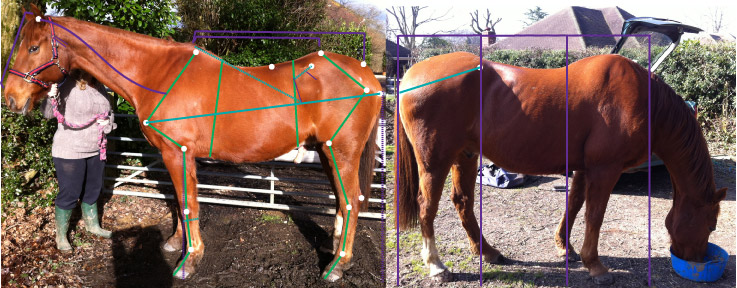
Figure 1 – Left and right lateral view with point markers, angles and lines of measurement as well as an estimated cervical curve on the left and box divided into three sections that equal the length of the pelvis, total body length should not exceed the x3 pelvis lengths.
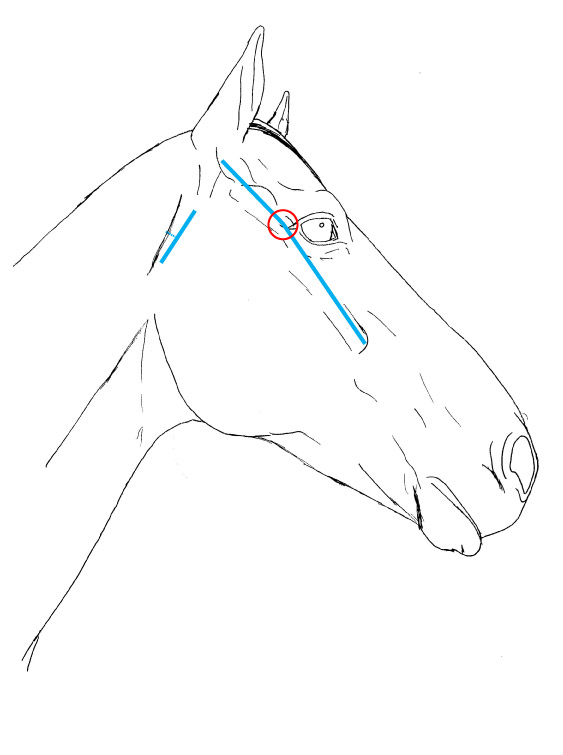
Figure 2 – Tracing of Sparky’s head with highlighted angles and points.
(image unavailable)
Figure 3 – maximum neck length for athletic performance. (Bennett, 2012, p.37, figure 20.)
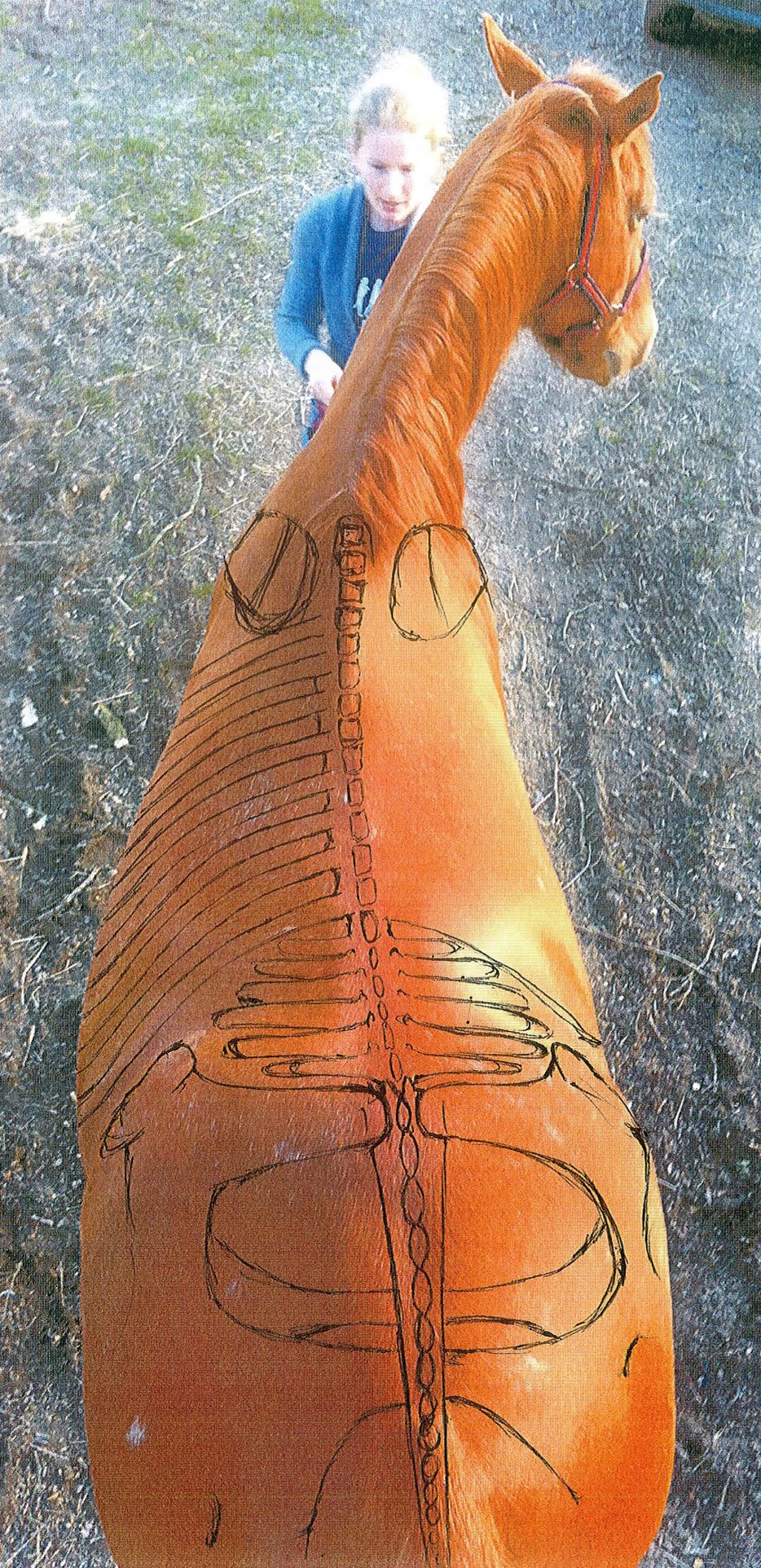
Figure 4 – (left) Top view of Sparky with pen drawn marks indicating underlying skeleton; highlighting stiffness in bending centrally in the cervical vertebrae.
(image unavailable)
Figure 5 – (right) Diagram depicting lateral resistance in long necked horses. (Bennett, 2012, p.36, figure 18).
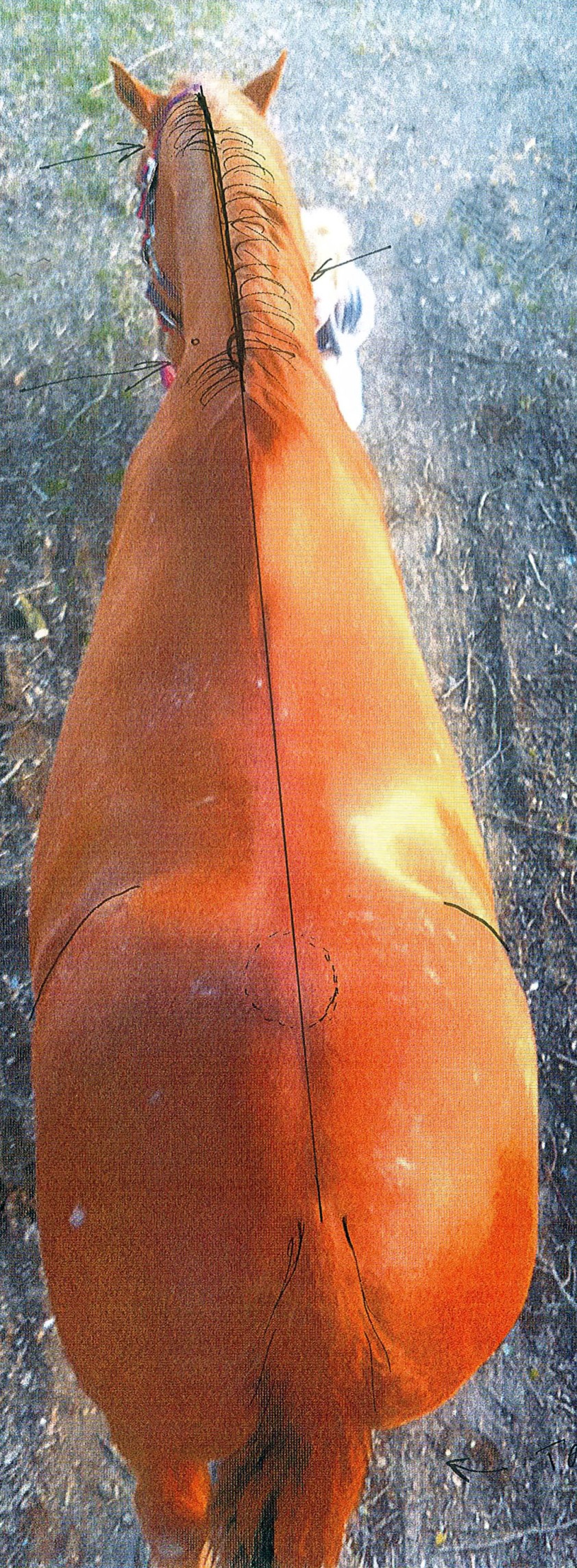
Figure 6 – Top view of Sparky depicting slight spinal curvature and the overly prominent wings of the pelvis.
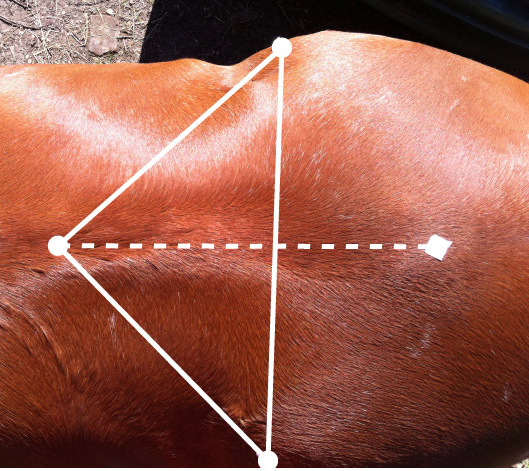
Figure 7 – Dorsal view of lumbar region, with markers.

Figure 8 – Top – actual tracing of Sparky, bottom – shortened lumbar and cervical tracing as guided by recommended proportions of body in relation to pelvis length and neck in relation to head length.
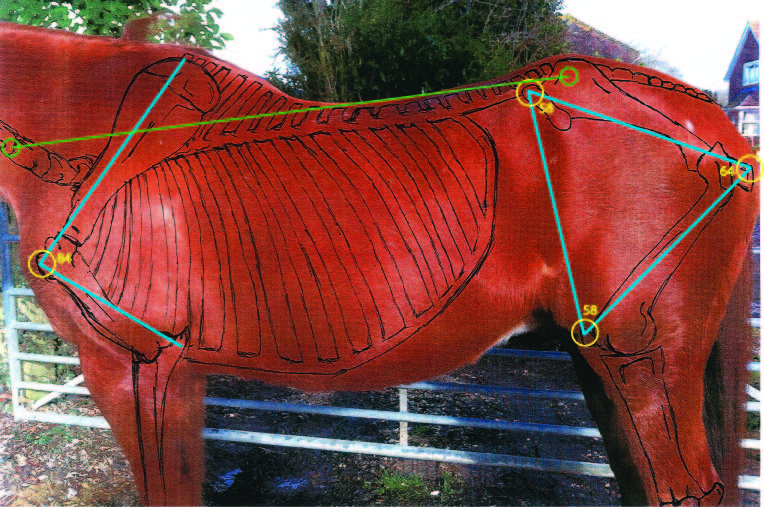
Figure 9 – lateral view of body with shoulder and hip angles as well as overall body balance line.
(image unavailable)
Figure 10 – Example of skeleton and core muscles (Higgins, 2012, p.45).
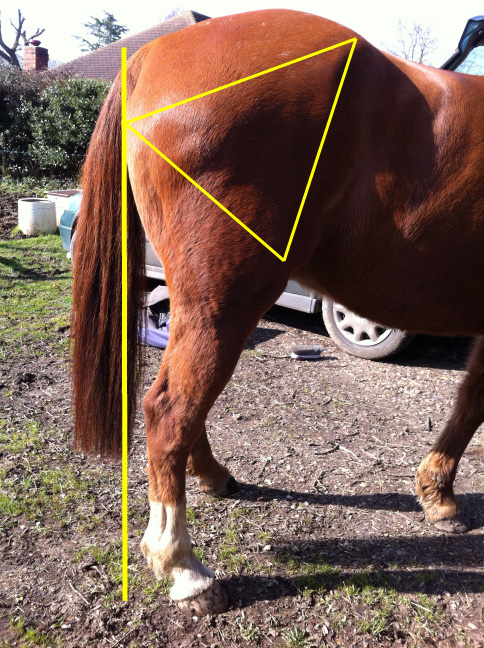
Figure 11 – Hind limb focus with pelvis at different angle when cannon perpendicular to floor.
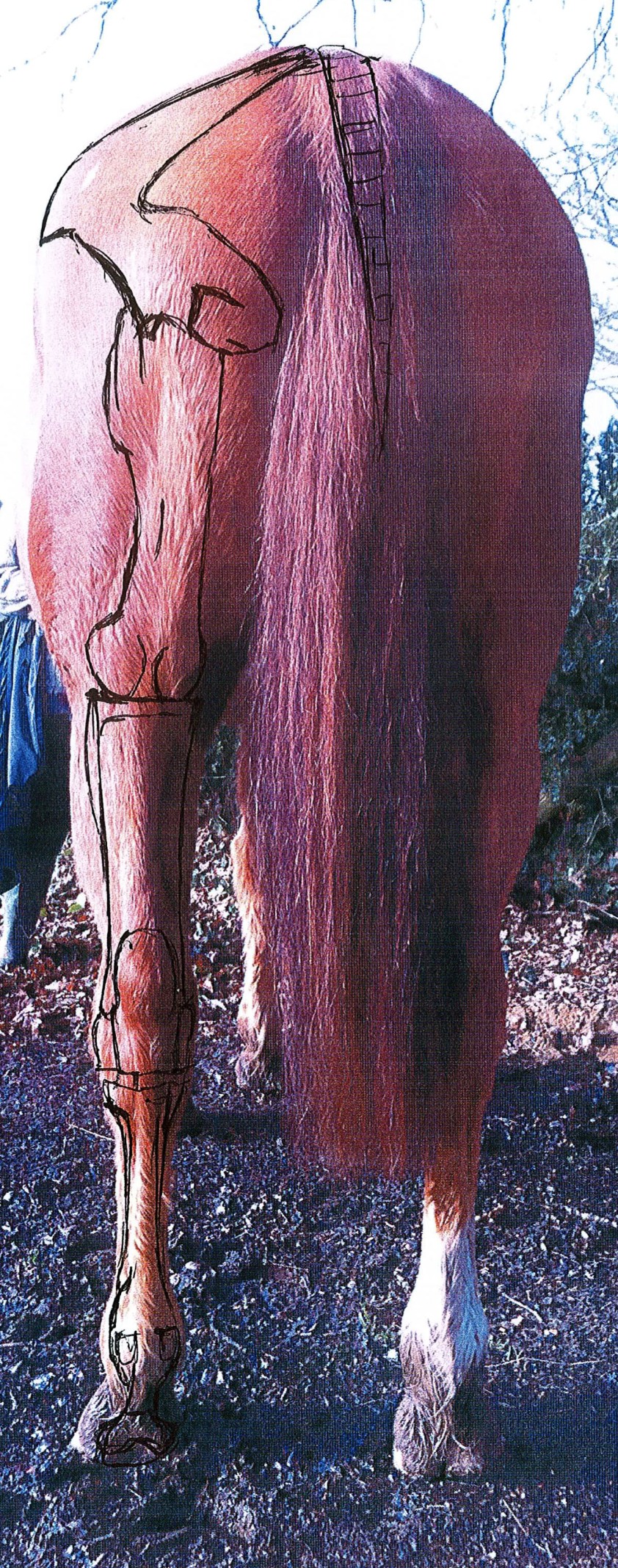
Figure 12 – Rear view of Sparky with outlined skeletal structure.
(image unavailable)
Figure 13 – Lumbo-sacral junction, (Higgins, 2011, p.27)
(image unavailable)
Figure 14 – Landing horse, (Higgins, 2011, p.59)
Bibliography
- Barker, N. & Braithwaite, S. (2011, first printed 2009) Feet First – Barefoot Performance and Hoof Rehabilitation, London: J. A. Allen
- Barr, L. (2012) ‘The 8 Most Common Causes of Lameness in a Showjumper’, Horse & Hound, Spring, Page 32 – 34
- Bennett, D. (2012) Principles of Conformation Analysis – Volumes I, II, III, Boulder, CO: Equine Network
- Gray, P. (1993) Soundness In The Horse, London: J. A. Allen & Company Limited
- Higgins, G. (2012) Horse Anatomy for Performance – A Practical Guide to Training, Riding and Horse Care, Newton Abbot: RR Donnelley for F&W Media International LTD
- Higgins, G. (2011) How Your Horse Moves, Newton Abbot: RR Donnelley for F&W Media International LTD
- Morrison, V. (1997) The Art of George Stubbs, London: Grange Books
- Ramey, D W. (1996) Concise Guide to Tendon & Ligament Injuries in the Horse, New York: Howell Book House
- Secrets of Bones – Size Matters, (2014) BBC 4, 18 February
- Secrets of Bones – Down to Earth, (2014) BBC 4, 24 February
- Stahlecker, F. In-Hand-Work for young dressage horses – part 1:Basics [DVD], Langwedel: Pferdia tv.
- Ware, C. (2010) Saddle Fit as it affects the Equine Biomechanics, http://www.equethy.com






